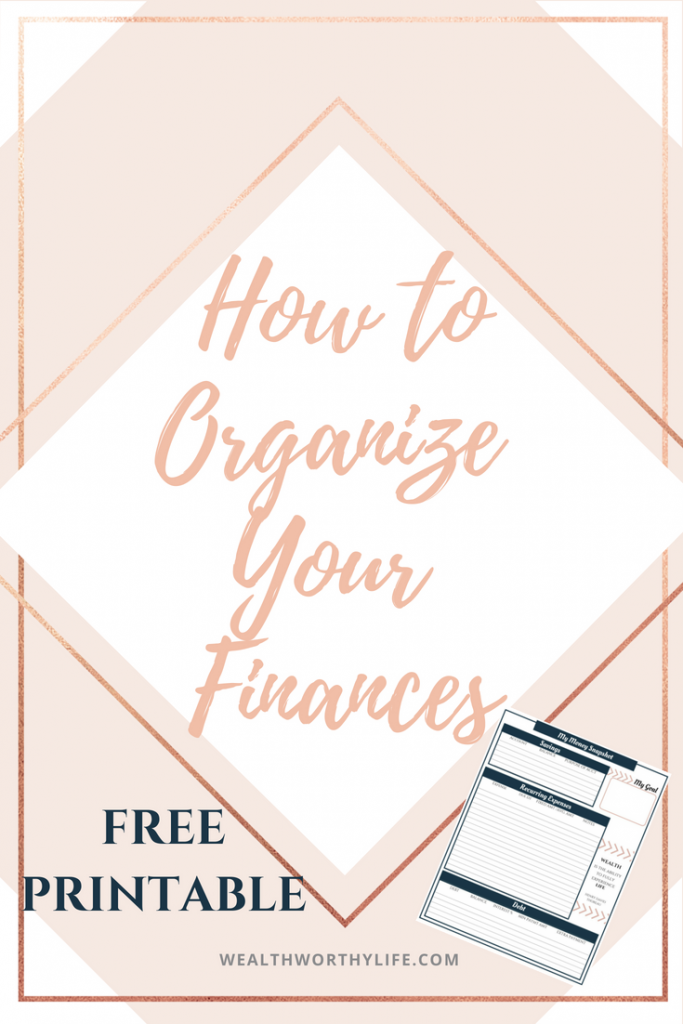We all want to make more money and save more money and often times we look to see how we can invest or we want to add a side hustle to our already busy schedule. However, before you do any of that the starting point should be tracking your current spending habits. Odds are you'll see certain categories of expenses that you didn't think added up to that amount. Small purchases can really add up. Plus, it's so easy to spend money with our credit cards and being able to purchase so easily online - Is Amazon your weakness?
Once you track your spending you'll be amazed to see where your money is going. I know I was surprised when I first started tracking my spending and found how much was being spent on restaurants. That got me to be more serious with meal planning.
So you may be motivated to get started with a budget but it's so overwhelming and you have no idea how to get started. This guide will provide you with some helpful information so you can finally take action and be well on your path to a wealthy life!

What is a budget?
A budget is an estimate of your income and expenses determined for a certain period of time. The period of time can be done weekly, monthly, quarterly, yearly or per paycheck. It lets you see the cash flow for the period you’ve selected and gives you a visual of all the categories involved per your income and spending habits.
If you’re just starting out and your goal is to get out of the paycheck to paycheck cycle then it’s very important to get a spending plan (aka budget) in place so you can visually see where your money is going and where you make some improvements. It doesn't matter whether you make have high or low income. Tracking is important if you're serious about getting out of this cycle for good. One misconception is that you'll be so limited by your spending plan and who wants that? No one does. No budget should tell you what you can and can't do. In fact, creating a spending plan will actually allow you to have more control of your finances because you’ll be the one deciding where you’re money should go.
How to get started?
You’ll need access your employee payroll information, checking accounts and savings accounts.
Information from the last 3 months would be ideal but if you can only access last month then that will be fine too. The more data you can get the more accurate your numbers will be. However, don’t stress about the numbers being perfect. The important thing is that you’re planning for a majority of it and that’s good enough.
Many banks now make it really easy to export the data out into a spreadsheet so if your bank has the capability then use that feature. Some may already categorize your transactions which definitely makes your job much easier and quicker.
When should I budget?
Make sure to pick a day of the week when you have the energy and schedule an appointment with yourself to create or update your budget. For example, if you schedule a budgeting session with yourself right after you get home from work but you know you’re typically worn out and just feel like crashing on the couch watching your favorite show on Netflix then let’s face it... it’s not going to happen. Just know if it’s your first time budgeting then it may take a little longer but with more practice you’ll be able to do it in less time.
Budgeting Methods
There are so many different budgeting methods out there You are free to explore those based on your needs. The thing with budgets is that it might be trial and error at first. You'll need to give it some time to see what works best for you. The important thing is to not give up. Eventually you’ll find a method that is easy and customized to your needs. Below are four budgeting methods that can help you get started.
Zero based budgeting
Every dollar you receive from your income has a function. Income minus your expenses equal zero. Your expenses will include everything like what you spend, give, invest, or save.
50/20/30 Rule
Fifty percent of your income should go towards living expenses like rent, transportation, food. 20% should go towards your financial goals like debt payoff, retirement, and savings. 30% of your income should go towards flexible spending like your wants (ex: travel and entertainment).
Cash Envelope System
With this system you use cash for specific spending categories in your budget. For example, this can be used if you’re trying to make sure you stay on track with your Eating out at restaurants and fast food budget for the month. Let’s say you budget $100 for the month so if you get paid twice each month you’ll take out $50 from the bank each paycheck, put it in an envelope and that is all the money you’re allowed to use for that category.
Paycheck Budgeting
This method is my favorite method and use myself. With this system you note your paycheck dates and your bill due dates. For example, if you get paid on last day of the month then the bills that fall from the 1st day of the following month until the 14th are paid from your first paycheck and the bills that fall between the 15th and last day of the month are paid from your 2nd paycheck. To create your own paycheck budgeting system check out this post!
Income
Look over your payroll information and look for your net pay. Depending on the budgeting method you’ve chosen make note of the monthly figure or per paycheck figure for the last 3 months.
At this point since you’re logged into your payroll information make note of your retirement contribution amount. We’ll check back on this later.
If you have irregular income because you are paid a base plus commission or just commission then there is still a solution. Look at your previous year’s payroll information and determine an average commission amount. Remember to guess low to be on the safe side.
Expenses
Dialing in on your expenses can get a little tricky so I’ll break it down for you. Review your expenses that you were able to get from your bank from the past 1-3 months. Luckily some banks already have categorized your expenses for you so all you have to do is take the average for each category. If your bank doesn’t have this feature you’ll have to manually categorize each transaction.
Here are some examples of expenses:
Fixed- Examples: Rent, subscription services, internet
Variable- Examples: Groceries, electricity, gas, restaurants
One-time / Yearly expenses: Vehicle registration, alarm system permit renewal, insurance
For the variable expenses you’ll want to guess high just to be on the safe side.
Differentiate between Wants and Needs
Your wants are the discretionary expenses. These could be expenses like eating out or entertainment.
Your needs are the non-discretionary expenses. These are your day-to-day living expenses.
As you’re looking through your expenses make a note of these. That way if you fall short you’ll know to cut down first on the discretionary expenses.
Sinking Funds vs. Emergency Fund
It’s a good idea to save up for large expenses that may come up. A sinking fund is money set aside for an upcoming expense. For example, in my case, I’m currently saving up in the event that I need the roof repaired or replaced and I’m also saving up for a new vehicle I plan to purchase in the next couple of years.
In comparison, an emergency fund is money set aside for an unknown event. Some examples can be a medical emergency or getting laid off from work. You can read more about emergency funds and different emergency scenarios here.
Financial Goals
I’ve always heard the phrase “Pay yourself first”. This phrase refers to allocating your money towards something that is important to you or something that you value. Do you want to take care of your future self and make sure you’re contributing enough to your retirement account? Maybe you have a life changing event like getting married or having a baby that you want to save up for. Or you want to pay off your debt quicker. Make sure your spending plan includes a financial goal.
Note
If your goal is to save more on retirement there’s no need to list it in your budget if it’s already being deducted from your paycheck by your employer. Just make sure it’s noted somewhere in the margins of your budget so that you’re aware how much you are currently contributing and periodically evaluate if you’re able to contribute more.
Join my newsletter and receive My Money Snapshot printable
Whatever your financial goal may be make sure to figure out how much you need and a deadline of when you need the money. Then you can just spread it out by the budget interval you have chosen.
It’s ok to start out with a rough estimate at first if you’re not entirely certain about the amount and date. The important thing is that you’re saving something towards that amount. You can re-evaluate your goals and update as needed.
Putting it all together
After determining all your income and expenses you will be able to get the big picture of your overall cash flow. Do you have some leftover? If so, then that’s great! You can choose to fund your goals with that extra money. If you’re in the red then this is your opportunity to evaluate and see if there are any discretionary expenses you can get rid of temporarily until you’re back on track.
Conclusion
The next step is to get into the habit of creating and evaluating your budget every week. It can take as little as 30 minutes per week. I’m serious…. just 30 minutes. If you’re just starting out it may be a little hard at first. Make sure to schedule it on your calendar and the more often you do it then it will become a habit for you therefore automating the process and saving you time.
Now you don’t have to stick with this method forever. This is a good starting point because it lets you see every single transaction and makes you more aware of where your money is going. Once you think you’ve got that down you can consider using budget apps. Some of the popular ones right now include: Mint, Everydollar, Goodbudget and YNAB.
If you think you’ll need more help feel free to schedule a free discovery call and we can chat about how I can help you create a budget that will work for you.
Need help with your budget?
LET'S GET ON A CALL TO GET STARTED




